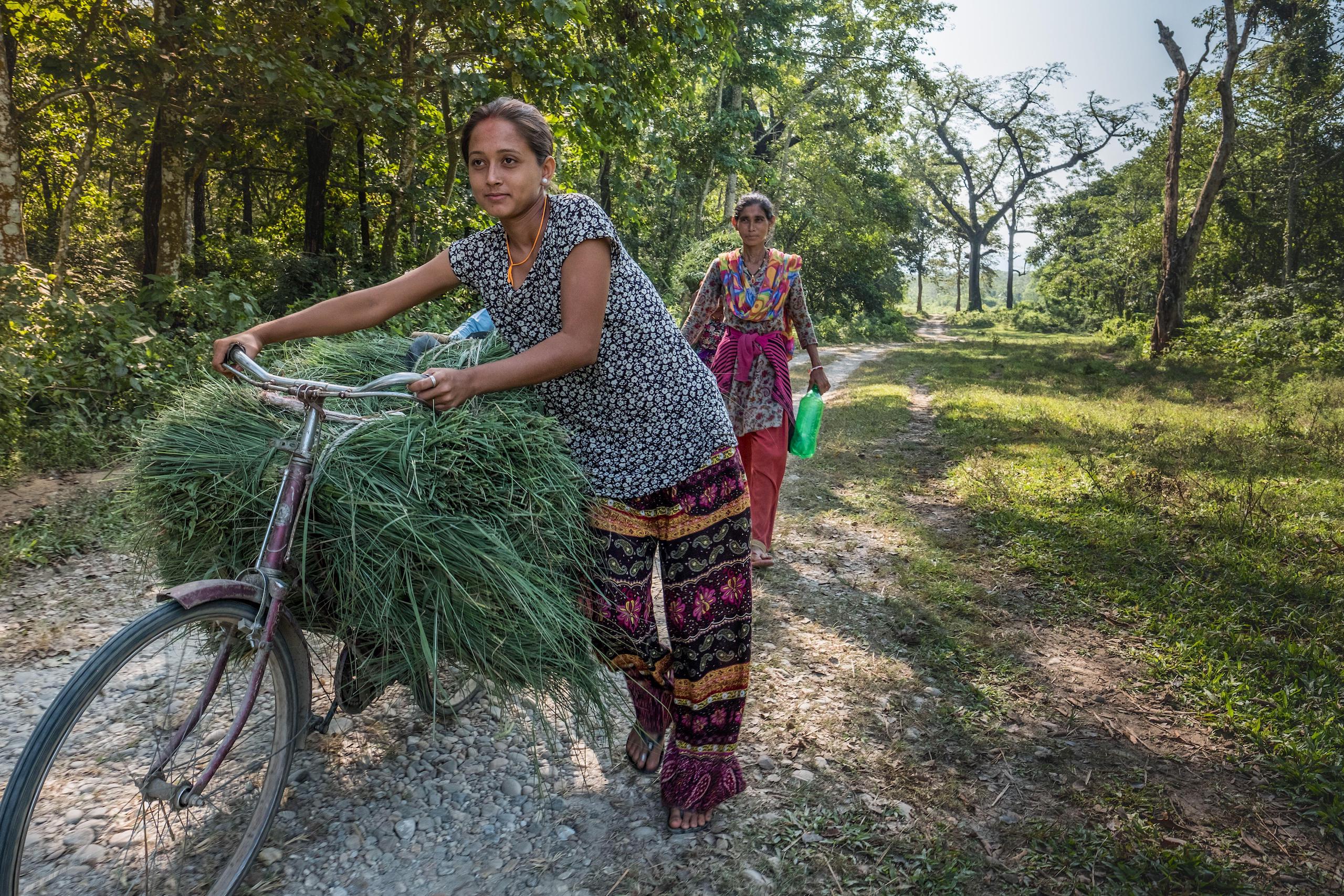For the past few years, Harkamati Karki, the president of Parshuram Bangat Women Community Forest in Nepal’s western province of Sudurpashchim has been struggling to raise funds. “Due to financial constraints, we are unable to renew our action plan [to manage the community forest] and are seeking help, but nothing is working,” she tells Dialogue Earth. Without an approved action plan, the 133 families in her community cannot access the government forest they rely on for fuelwood and timber.
Karki and her community are not alone. Across Nepal, over 13,000 community forests are in a similar bind, according to Birkha Bahadur Shahi, the vice-president of the Federation of Community Forestry Users Nepal (FECOFUN), without “renewed operational plans.” He explains that this, “means over 50% of community forests are out of the communities’ access as a source of resources.”
Community forestry: from poachers to caretakers
Community forestry was pivotal in preventing an ecological crisis in Nepal during the 1970s. A 1979 report by the World Bank warned that, without significant afforestation efforts, Nepal’s hill forests would be decimated by 1990, with the Terai forests following by 2000. Since then, Nepal has made significant strides in afforestation, nearly doubling its forest cover from 26% in 1992 to 45% by 2016.
Central to this turnaround was the 1993 Forest Act, enabling local communities to manage parts of government forests, effectively transforming them from poachers into caretakers of their environment. This transformation was supported by providing communities with legal and economic incentives to manage and protect forest resources sustainably. By 2012, community forests covered nearly 23% of Nepal’s total forest area (1.2 million ha), involving over 19,500 community forest groups, comprising 1.6 million households and nearly 40% of Nepal’s population, as highlighted in a 2019 research paper.
The challenges of success
The success of the community forestry programme came with its own challenges, however. The Forest Regulations Act 2021 states that operational plans must be renewed every five or 10 years, tailored to the specific legislation governing each forest. With around 25,000 active community forest groups in Nepal today, this requirement has placed a substantial burden on the forest department, which is responsible for approving these plans.
A vital component of these management plans is an inventory which lists the type of trees and landscape, as well as the contents of the forest area in question. Forest ecosystems are dynamic; they naturally evolve over time with older trees maturing and new species emerging. Management plans, therefore require periodic revisions to reflect the current state of the forests. Both the Forest Department and forest communities were assisted by the government and international donors to draw up these plans, but as the crisis of the 70s has receded, financial and technical support has slowly disappeared, while the pressure has only increased.
Sabnam Pathak, information officer at the Department of Soil Conservation and Forest, tells Dialogue Earth that one division forest office can provide technical support to up to 20 groups a year. With 84 forest divisions nationwide, this amounts to only about 1,680 plans approved per year, assuming they are operating at full capacity.
One way around this was for community forests groups to hire independent forestry experts to help draft the plans, with the forest department only needing to review and approve them; a process costing between NPR 50,000-100,000 per plan [USD 373-747], depending on the size and complexity of the community forest. For the Parshuram Bangat Women Community Forest, the cost would be on the lower end but raising even that amount has proved difficult, says Karki. “We invested around 35 thousand rupees [USD 262] to develop the inventory but are not able to manage another 25 thousand [USD 187] to pay the forester,” explains Karki.
Previously, community forest groups received technical and financial support from the Community Forestry Development Program, a collaboration between the government and NGOs. However, Arjun Chapagain, the sustainable forest management coordinator at FECOFUN, notes that government and international donor priorities shifted following the adoption of a new federal constitution in 2015, leading to a cessation of funding over the past seven years.
Rajendra KC, director general of the Forest and Training Center under the Ministry of Forests and Environment, asserts that communities must now self-finance their forest management plans. “The communities should realise that they are the ones who need to be responsible for updating and renewing action plans because they are the ones who benefit from the forest directly,” he says. “Ultimately, it’s their duty.”
Unfortunately, community forest groups have been losing the very people who could help financially as they migrate from the mid-hills and mountainous areas. “Mid-hill is where a lot of community forests are struggling,” explains Shova Subedi, chief of the Community Forest Study Center, another institute under the Ministry of Forests and Environment. As people migrate from these areas, where productivity is fairly low, she adds, the financial capability of those left behind is depleted.
Federalism has brought new taxes
The transition to federalism added yet another problem for forest communities, with the seven provinces and 753 local governments introducing additional taxation on firewood and timber sales, over and above the Value Added Tax (VAT) imposed by the central government. The Supreme Court, however, provided some relief on August 2, 2023, with an interim stay order ruling that no additional taxes or fees other than VAT should be charged to community forests – a move welcomed by Judda Bahadur Gurung, a member of the National Natural Resources and Fiscal Commission, the government body in charge of resource distribution to central, provincial and local governments. “Provinces and local governments have the right to have their own forest acts or policies, but they are not allowed to charge or collect any additional royalties or service charges from community forests or any other national forest,” he said.
He explained that this is because the provinces already receive a share of the tax collected. In the description of the existing Forest Act 2019 – which superseded the 1993 Act – community forests are regarded as ‘national forests,’ and according to the Inter-government Fiscal Management Act, 50% of the royalties received go to the central government, with the remainder (25% each) going to the provincial and local governments. The 2019 Act also makes it obligatory that the work plan includes 25% of the budget for maintaining the forest and 25% for poverty alleviation programmes. It explicitly allows for eco-tourism and other activities, with the objective of providing new revenue streams for community forests.
Not enough expertise
However, while the exemption eases the pressure on small community forests, it does little to address the backlog of operational plans awaiting approval. FECOFUN says it is supporting 600 user groups, but that is less than 5% of those without an operational plan.
“The merger of struggling small-sized community forests is [a potential] solution because many of these forests are not able to function properly due to changed demographic dynamics,” says Subedi of the Community Forest Study Center.
Another option may be automation. Hari Adhikari, a forestry researcher currently based in Finland, is working on one such project. “Our service is web-based and it is very easy to use and available at a very affordable price. The only thing needed is for the government authority to adopt and allow this new technology.”
Yet, for many like Karki’s community and the families who manage the Parshuram Bangat Women Community Forest, such solutions remain out of reach, leaving them without legal access to the forests that are crucial to their survival.











